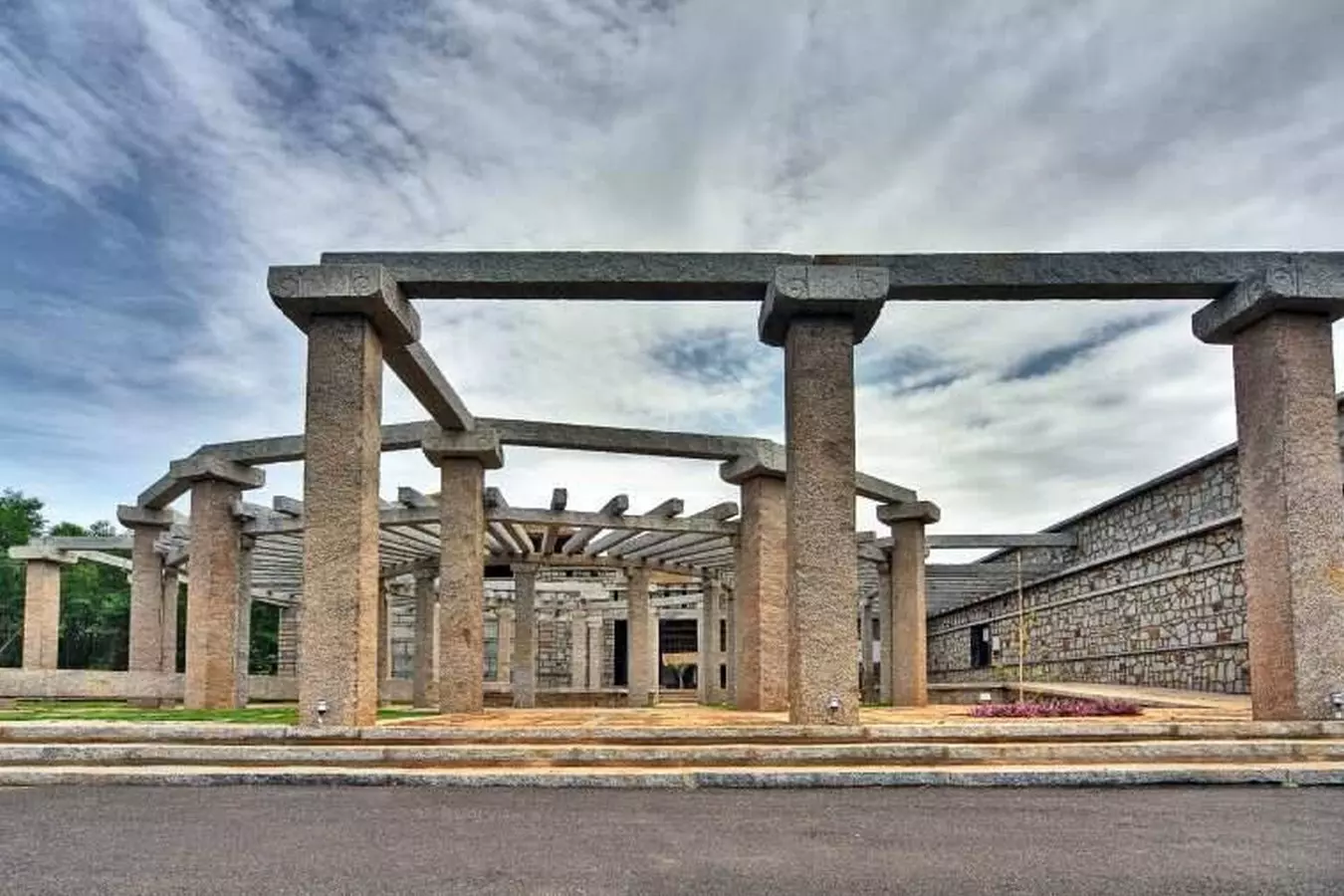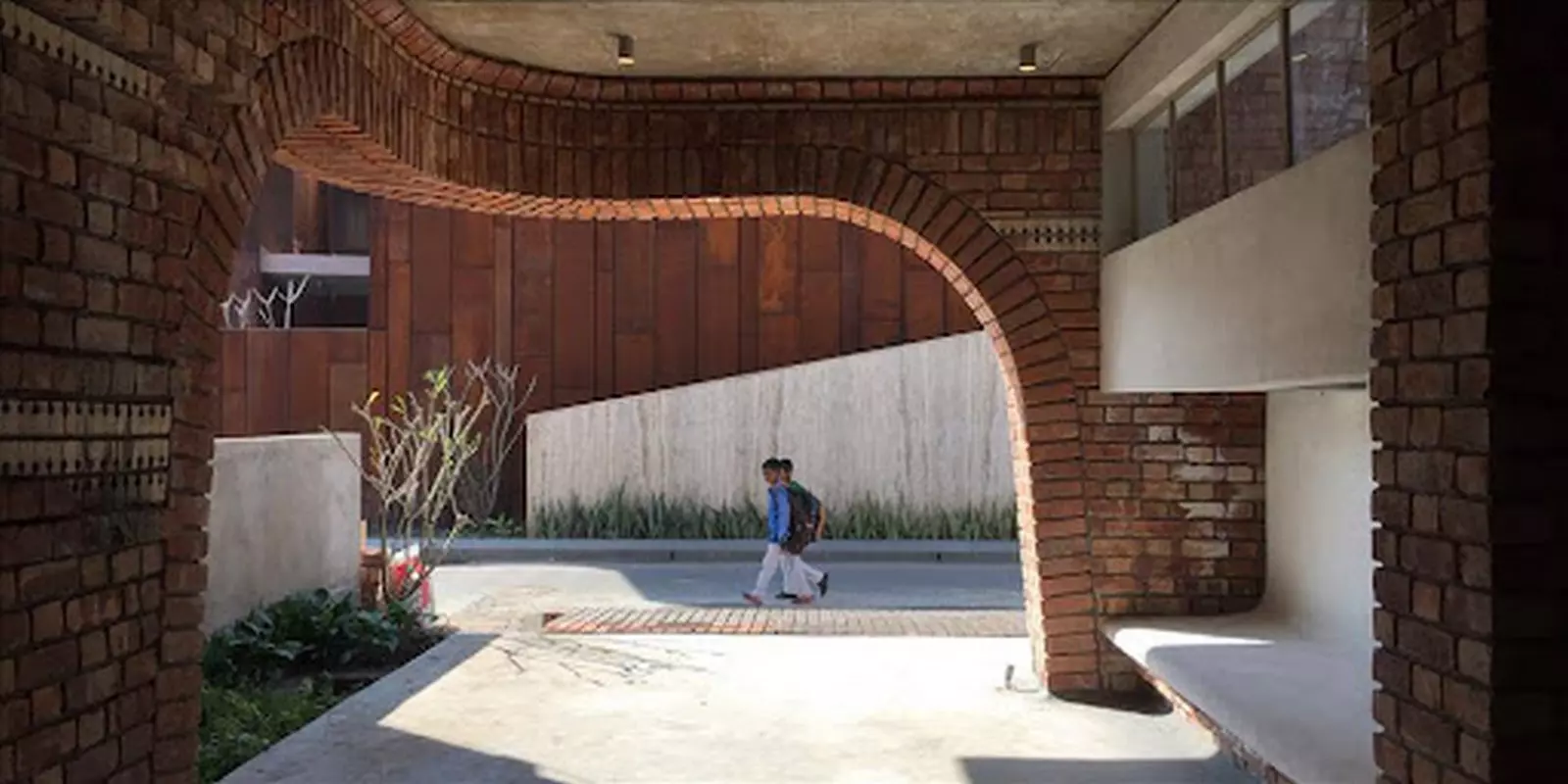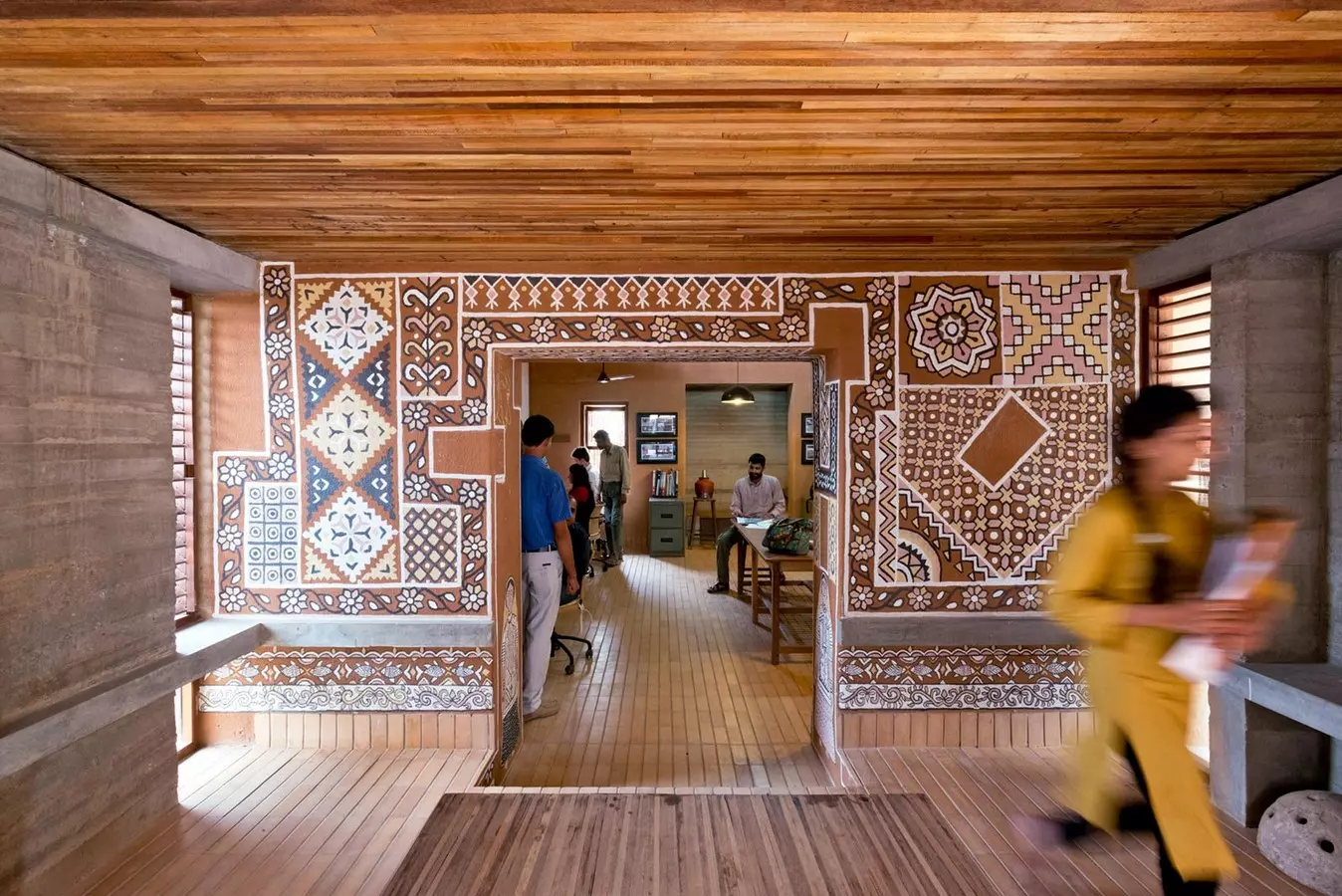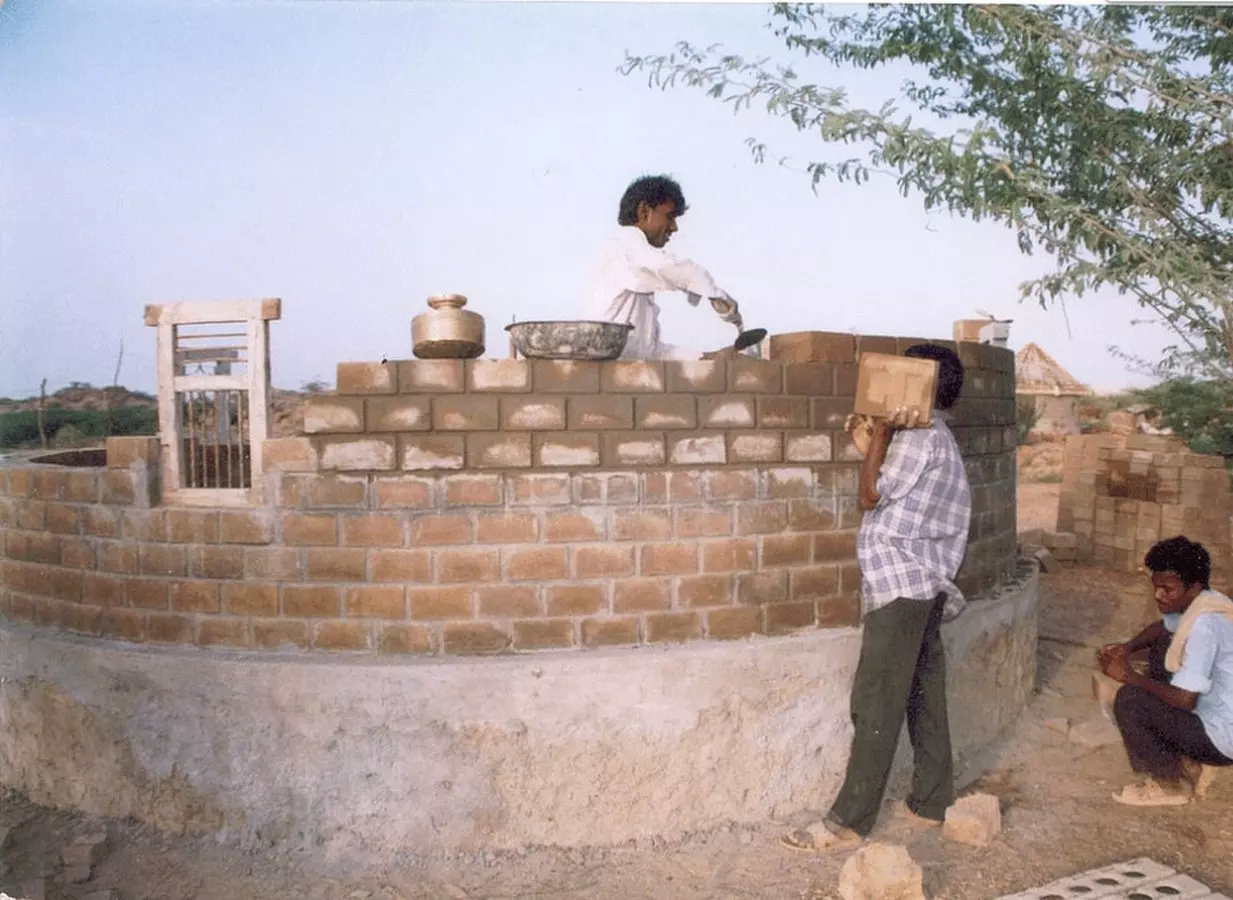Who are the real heroes behind architectural masterpieces? They are the artisans - the masters of their craft, the keepers of traditional techniques that have been passed down through generations. These artisans infuse soul into their work, blending it seamlessly with the fabric and tradition of the context. Their creations are not just aesthetically pleasing, but also carry symbolic meanings and values.
Architectural practices that respect local crafts and styles bring creative meaningfulness to the purpose of the building. The richness of craft in architecture makes the overall art and architecture more responsive to people and their surroundings. It is through the expertise and indulgence of these artisans that we achieve substantial economic and problem-solving advantages.
 Figure 1: Krushi Bhawan, Architectural masterpiece by Studio Lotus Architects with 100 artisans to weave a story on the Structure_©Andre J. Fanthome
Figure 1: Krushi Bhawan, Architectural masterpiece by Studio Lotus Architects with 100 artisans to weave a story on the Structure_©Andre J. Fanthome
The traditional classes derived from the basic principles of form, shape, proportion, and scale are standout examples of the orthodox practice culture. Unfortunately, the present scenario of architecture often overlooks the importance of local cultural ethos and heritage. Art and architecture should speak of their time, curated by the innate knowledge of traditional materials and technologies in the hands of artisans. Joining hands with these artisans is a holistic approach to any form of space or craft.
In a country as diverse as India, the craftsmanship adopted by communities and individual artisans plays a vital role. It not only preserves traditional knowledge but also provides sustainable livelihoods, especially for women. The contribution of art and architecture in promoting and enhancing tribal knowledge is profound.
 Figure 2: Studio Kaaru and Stone Masonry Artisans on site for Kaladham, an international arts and cultural centre in Bellary, Karnataka._©Studio Kaaru
Figure 2: Studio Kaaru and Stone Masonry Artisans on site for Kaladham, an international arts and cultural centre in Bellary, Karnataka._©Studio Kaaru
Uttam Jain, a Mumbai-based architect, shared his experience of working with local artisans on his cinema house project. In a conversation with architect-academic Narendra Dengle, Jain narrated how a local master craftsman named Lal Mohammad, who couldn't read or write properly, was well-versed with the drawings. With an additional cost of Rs.30,000, they incorporated a chequered pattern of a local dressed stone on the facade. Lal Mohammad came up with a solution called 'lap joint', which added no extra costs. This experience taught Jain a valuable lesson in humility.
Similarly, the regional flavors are embraced and honed by artisans' skills and expertise. Their touch makes the art and architecture of a place wholesome and personal. Architecture, as a craft, should be a collective panorama of artists, artisans, and craftspeople. The growth of urbanity in art and architecture has sidelined the artist, reducing them to mere workers on construction sites. The vanishing human touch is an effect of technological advances. The role of an artisan shouldn't be belittled in the overall design process and cycle.
 Figure 3: Gallery House by Abin Design Studio and a masonry of local masters_©Abin Design Studio
Figure 3: Gallery House by Abin Design Studio and a masonry of local masters_©Abin Design Studio
The Hunnarshala Foundation, founded in 2001, exemplifies a holistic approach to community empowerment through art and architecture. They aim to bring artists into the mainstream of construction practices by providing training and empowering them. Through their reconstruction projects in Kutch and other disaster-prone areas, the foundation has built a strong network of artisans.
By running programs on traditional knowledge and art and architecture practices, the foundation empowers communities while preserving their traditional skills. Today, hundreds of artisans are using their craft to contribute to building cities nationally and internationally.
 Figure 4: Hunnarshala Foundation_©https://currystonefoundation.org/practice/hunnarshala/
Figure 4: Hunnarshala Foundation_©https://currystonefoundation.org/practice/hunnarshala/
Hunnarshala has initiated a much-needed dialogue with artisans in the country, reviving their local artisanal knowledge to create disaster-resistant and safe architecture. This initiative delivers a clear message that when power is vested in the hands of the community, the best solutions are created.
According to Sandeep Virmani, the Executive Vice-Chairman of Hunnarshala Foundation, "Solutions also happen when you work with your hand. It’s in the doing, the connection with mind, head, and heart that we have built a solution. When architects and artisans come together, they develop a vocabulary focused around the material. It’s the material that tells you what the solution is."
 Figure 5: Hunnarshala and its Artisans_©https://www.thebetterindia.com/179625/bhuj-earthquake-low-cost-sustainable-homes-hunnarshala-gujarat/
Figure 5: Hunnarshala and its Artisans_©https://www.thebetterindia.com/179625/bhuj-earthquake-low-cost-sustainable-homes-hunnarshala-gujarat/
In our pursuit of great architecture, we must not lose sight of the knowledge gathered through generations. Collaborations and expressions open new avenues of architectural perspective, keeping artisans and traditional systems in the limelight and ultimately crafting a niche for them. The role of artisans in architectural projects reflects vernacularism and the continuation of tradition. Relationships must be woven with artisans and communities, uplifting the regional field of art and architecture by promoting local traditional practices and materials.












